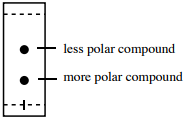5.5: Separation Theory
- Page ID
- 536796
\( \newcommand{\vecs}[1]{\overset { \scriptstyle \rightharpoonup} {\mathbf{#1}} } \)
\( \newcommand{\vecd}[1]{\overset{-\!-\!\rightharpoonup}{\vphantom{a}\smash {#1}}} \)
\( \newcommand{\dsum}{\displaystyle\sum\limits} \)
\( \newcommand{\dint}{\displaystyle\int\limits} \)
\( \newcommand{\dlim}{\displaystyle\lim\limits} \)
\( \newcommand{\id}{\mathrm{id}}\) \( \newcommand{\Span}{\mathrm{span}}\)
( \newcommand{\kernel}{\mathrm{null}\,}\) \( \newcommand{\range}{\mathrm{range}\,}\)
\( \newcommand{\RealPart}{\mathrm{Re}}\) \( \newcommand{\ImaginaryPart}{\mathrm{Im}}\)
\( \newcommand{\Argument}{\mathrm{Arg}}\) \( \newcommand{\norm}[1]{\| #1 \|}\)
\( \newcommand{\inner}[2]{\langle #1, #2 \rangle}\)
\( \newcommand{\Span}{\mathrm{span}}\)
\( \newcommand{\id}{\mathrm{id}}\)
\( \newcommand{\Span}{\mathrm{span}}\)
\( \newcommand{\kernel}{\mathrm{null}\,}\)
\( \newcommand{\range}{\mathrm{range}\,}\)
\( \newcommand{\RealPart}{\mathrm{Re}}\)
\( \newcommand{\ImaginaryPart}{\mathrm{Im}}\)
\( \newcommand{\Argument}{\mathrm{Arg}}\)
\( \newcommand{\norm}[1]{\| #1 \|}\)
\( \newcommand{\inner}[2]{\langle #1, #2 \rangle}\)
\( \newcommand{\Span}{\mathrm{span}}\) \( \newcommand{\AA}{\unicode[.8,0]{x212B}}\)
\( \newcommand{\vectorA}[1]{\vec{#1}} % arrow\)
\( \newcommand{\vectorAt}[1]{\vec{\text{#1}}} % arrow\)
\( \newcommand{\vectorB}[1]{\overset { \scriptstyle \rightharpoonup} {\mathbf{#1}} } \)
\( \newcommand{\vectorC}[1]{\textbf{#1}} \)
\( \newcommand{\vectorD}[1]{\overrightarrow{#1}} \)
\( \newcommand{\vectorDt}[1]{\overrightarrow{\text{#1}}} \)
\( \newcommand{\vectE}[1]{\overset{-\!-\!\rightharpoonup}{\vphantom{a}\smash{\mathbf {#1}}}} \)
\( \newcommand{\vecs}[1]{\overset { \scriptstyle \rightharpoonup} {\mathbf{#1}} } \)
\( \newcommand{\vecd}[1]{\overset{-\!-\!\rightharpoonup}{\vphantom{a}\smash {#1}}} \)
\(\newcommand{\avec}{\mathbf a}\) \(\newcommand{\bvec}{\mathbf b}\) \(\newcommand{\cvec}{\mathbf c}\) \(\newcommand{\dvec}{\mathbf d}\) \(\newcommand{\dtil}{\widetilde{\mathbf d}}\) \(\newcommand{\evec}{\mathbf e}\) \(\newcommand{\fvec}{\mathbf f}\) \(\newcommand{\nvec}{\mathbf n}\) \(\newcommand{\pvec}{\mathbf p}\) \(\newcommand{\qvec}{\mathbf q}\) \(\newcommand{\svec}{\mathbf s}\) \(\newcommand{\tvec}{\mathbf t}\) \(\newcommand{\uvec}{\mathbf u}\) \(\newcommand{\vvec}{\mathbf v}\) \(\newcommand{\wvec}{\mathbf w}\) \(\newcommand{\xvec}{\mathbf x}\) \(\newcommand{\yvec}{\mathbf y}\) \(\newcommand{\zvec}{\mathbf z}\) \(\newcommand{\rvec}{\mathbf r}\) \(\newcommand{\mvec}{\mathbf m}\) \(\newcommand{\zerovec}{\mathbf 0}\) \(\newcommand{\onevec}{\mathbf 1}\) \(\newcommand{\real}{\mathbb R}\) \(\newcommand{\twovec}[2]{\left[\begin{array}{r}#1 \\ #2 \end{array}\right]}\) \(\newcommand{\ctwovec}[2]{\left[\begin{array}{c}#1 \\ #2 \end{array}\right]}\) \(\newcommand{\threevec}[3]{\left[\begin{array}{r}#1 \\ #2 \\ #3 \end{array}\right]}\) \(\newcommand{\cthreevec}[3]{\left[\begin{array}{c}#1 \\ #2 \\ #3 \end{array}\right]}\) \(\newcommand{\fourvec}[4]{\left[\begin{array}{r}#1 \\ #2 \\ #3 \\ #4 \end{array}\right]}\) \(\newcommand{\cfourvec}[4]{\left[\begin{array}{c}#1 \\ #2 \\ #3 \\ #4 \end{array}\right]}\) \(\newcommand{\fivevec}[5]{\left[\begin{array}{r}#1 \\ #2 \\ #3 \\ #4 \\ #5 \\ \end{array}\right]}\) \(\newcommand{\cfivevec}[5]{\left[\begin{array}{c}#1 \\ #2 \\ #3 \\ #4 \\ #5 \\ \end{array}\right]}\) \(\newcommand{\mattwo}[4]{\left[\begin{array}{rr}#1 \amp #2 \\ #3 \amp #4 \\ \end{array}\right]}\) \(\newcommand{\laspan}[1]{\text{Span}\{#1\}}\) \(\newcommand{\bcal}{\cal B}\) \(\newcommand{\ccal}{\cal C}\) \(\newcommand{\scal}{\cal S}\) \(\newcommand{\wcal}{\cal W}\) \(\newcommand{\ecal}{\cal E}\) \(\newcommand{\coords}[2]{\left\{#1\right\}_{#2}}\) \(\newcommand{\gray}[1]{\color{gray}{#1}}\) \(\newcommand{\lgray}[1]{\color{lightgray}{#1}}\) \(\newcommand{\rank}{\operatorname{rank}}\) \(\newcommand{\row}{\text{Row}}\) \(\newcommand{\col}{\text{Col}}\) \(\renewcommand{\row}{\text{Row}}\) \(\newcommand{\nul}{\text{Nul}}\) \(\newcommand{\var}{\text{Var}}\) \(\newcommand{\corr}{\text{corr}}\) \(\newcommand{\len}[1]{\left|#1\right|}\) \(\newcommand{\bbar}{\overline{\bvec}}\) \(\newcommand{\bhat}{\widehat{\bvec}}\) \(\newcommand{\bperp}{\bvec^\perp}\) \(\newcommand{\xhat}{\widehat{\xvec}}\) \(\newcommand{\vhat}{\widehat{\vvec}}\) \(\newcommand{\uhat}{\widehat{\uvec}}\) \(\newcommand{\what}{\widehat{\wvec}}\) \(\newcommand{\Sighat}{\widehat{\Sigma}}\) \(\newcommand{\lt}{<}\) \(\newcommand{\gt}{>}\) \(\newcommand{\amp}{&}\) \(\definecolor{fillinmathshade}{gray}{0.9}\)Silica gel is composed of a network of silicon-oxygen bonds, with O−H bonds on its surface, as well as a layer of water molecules. Silica gel (SiO2⋅xH2O) is used in this discussion, but is structurally analogous to alumina (Al2O3⋅xH2O). This very polar stationary phase is paired with a relatively nonpolar mobile phase (an organic solvent or solution), in what is referred to as "normal phase" TLC. Although this is the most common form of TLC (and what will be focused on in this section), "reverse phase" TLC (with a nonpolar stationary phase and a polar mobile phase) is sometimes used.
The figure below shows how acetophenone would cling to the surface of silica gel through intermolecular forces (IMFs). In this case, acetophenone can hydrogen bond to the silica surface through its oxygen atom. As eluent flows over the sample, an equilibrium is established between the sample being adsorbed on the stationary phase and dissolved in the mobile phase. When in the mobile phase, the compound moves up the plate with the flow of liquid to later readsorb on the stationary phase further up the plate. The resulting Rf of the compound is dependent on the amount of time spent in the stationary and mobile phases.
.png?revision=1&size=bestfit&width=1110&height=395)
The equilibrium distribution between the two phases depends on several factors:
The strength of intermolecular forces between the sample and the stationary phase:
A compound that forms strong IMFs with the silica or alumina will often favor the stationary phase, and will spend much of the elution time adhered to the plate. This means it will spend less time in the mobile phase (which is the only means for it to travel up the plate), causing it to end up low on the TLC plate, and have a low Rf.
Compounds that have oxygen or nitrogen atoms should be able to hydrogen bond with the stationary phase (have strong IMFs with the stationary phase), and thus will have lower Rf values than compounds of similar size that can only interact through dispersion forces.
The strength of interaction between the sample and the mobile phase:
As the mobile phase is always less polar than the stationary phase in normal phase TLC, polar compounds will tend to have a lesser affinity for the mobile phase than nonpolar compounds (based on the "like dissolves like" principle). Therefore, polar compounds tend to spend less of the elution time mobile than a nonpolar compound, so will travel "slower" up the plate, and have a low Rf.
Thus, a compound with a lower Rf tends to have more polar functional groups than a compound with a higher Rf.

Structural Considerations
To demonstrate the effect of structural features on Rf, an eluted TLC plate of benzyl alcohol, benzaldehyde, and ethylbenzene is shown in Figure 2.18. The relative order of Rf reflects the polarity trend in the series.
.png?revision=1&size=bestfit&width=889&height=413)
Benzyl alcohol and benzaldehyde have polar functional groups so they had lower Rf values than ethylbenzene, which is completely nonpolar. Both compounds are able to hydrogen bond to the polar stationary phase, so are more strongly attracted to the stationary phase than ethylbenzene, which interacts only through weak dispersion forces. As the least "polar" of the series, ethylbenzene is also the best dissolved by the weakly polar eluent. For these reasons, ethylbenzene spent the least time in the stationary phase and the most time in the mobile phase, which is why it traveled the furthest up the plate and had the highest Rf of the series.
Both benzaldehyde and benzyl alcohol are capable of hydrogen bonding with the stationary phase, but benzyl alcohol had the lower Rf because it can form more hydrogen bonds (through both the oxygen and hydrogen atoms of the OH group). This caused benzyl alcohol to be more strongly adhered to the silica/alumina than benzaldehyde, causing it to spend more time in the stationary phase.
Adapted from Separation Theory by Lisa Nichols.

